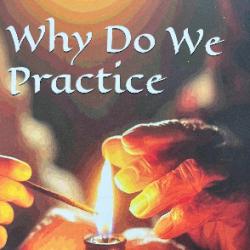Recently, an Instagram follower asked me an excellent question. They asked, “What would you say if someone told you that Gardnerian Craft is, in part, based on almost outdated and debunked academic books on witchcraft?” What a loaded question! But a good one, nonetheless.
The Short Answer

Just because a text is outdated does not render it worthless, and debunked texts should be analyzed for their historical value. Today’s scholarship is built on the backbone of yesterday’s information.
Gardnerian Wicca has evolved since its inception, and modern initiates know the texts that influenced Gerald Gardner do not represent current scholarship. Very few, if any, Gardnerians believe that our tradition is derived from an ancient witch-cult, for example.
The Long Answer
Gardner’s Influences: Who They Were and Are They Debunked & Outdated?
It’s worth noting that Gerald Gardner was influenced by many texts and people, including: Aleister Crowley and the OTO; Golden Dawn; The White Goddess (1948) by Robert Graves; The Witch-cult in Western Europe (1921) by Margaret Murray; The Golden Bough (1922) by James Frazer; Aradia, or Gospel of the Witches (1899) by Charles G. Leland; and, the Key of Solomon (mid-17th century).
I don’t think it’s useful for me to discuss why some of those texts are considered debunked or outdated, as plenty of scholarship has already been dedicated to that. (Pro tip: to research criticisms of these works, search the title + “criticisms” in Google or Google Scholar). Rather, in this case, it’s more important to discuss the value of texts that have been labeled “debunked” or “outdated.” For something to be debunked means that it’s been proven to be false, or without enough substantial evidence or data to make its claims true. An outdated item is one that is no longer in fashion, though some people construe that term to mean “no longer of any value.”
Historical Fact vs. Value
Though several of the aforementioned texts have been debunked in terms of facts, they still have historical value. The value of these texts lies in what they represent as products of their eras. Aradia was published during a time when Spiritualism was riding its peak (1840s to the 1920s) and was just before Gardnerian Wicca came on the scene. People were obsessed with communicating with the dead during the Spiritualism movement. This fascination was particularly evident in middle to upper social classes in English-speaking countries. Well-known characters like the Fox Sisters and Madame Blavatsky came through this movement as well.
Cultural anthropology also got a big boost in the late 19th and early 20th centuries. Aradia is what Leland thought was the religious text of some Italian witches, revealing their rituals, spells, stories and myths. Nearing the end of the Spiritualism religious movement, Witch-cult and Golden Bough were published. These next few decades to follow were huge for modern cultural anthropology. In fact, Egyptomania defined parts of the early 20th century, captivating everyone with everything ancient Egypt. This mania influenced modern architecture, literature, politics, art, film, and religion.

Ancient Egypt wasn’t the only culture to bewitch those generations, as scholars everywhere began publishing tons of studies and theories of various cultural practices around the world. The early 20th century’s infatuation with cultural anthropology was coupled with the excitement of new archaeological discoveries, too. Without substantial evidence to the contrary, though, scholars like Murray could get away with publishing their theories as facts at the time. Excitement and obsession can sway the otherwise logical brain of any person, academics included.
Authority
The authors of these works weren’t unimportant people, either. Leland was an American folklorist, educated at Princeton University. Graves was a poet and classist, educated at St. John’s College in Oxford. Murray was an archaeologist and anthropologist, educated out of University College London. Frazer was a social anthropologist and folklorist, educated at University of Glasgow and Trinity College.
Each of these individuals was well-educated, published, and respected in their academic communities. Just because modern scholarship has since “debunked” their theories, it does not mean that their work is now worthless. The social and academic contributions of their works are evident, despite the critics who disagree with them. Their works started conversations, prompted better research, and generated interest in subjects that were once very taboo.
We can say the same about Gerald Gardner’s works, The Meaning of Witchcraft (1959) and Witchcraft Today (1954). Poorly written and researched? Yep. Total shit? Nope. The dude was an amateur anthropologist, traveled the world, and was largely self-taught. He wrote about what he thought he knew and his books were a product of his time period, his experience, and self-education. There is still value to be gleaned from his books, even if they’re outdated and debunked.
The Validity of Gardnerian Wicca
Though Gardnerian Wicca’s origins obviously lie in what influenced Gerald Gardner’s thought and practices at the time, the tradition has evolved beyond those humble beginnings. Very few, if any, Gardnerians today use those texts as anything more than representations of beautiful works of prose or evidence of what historical scholars thought about witchcraft and paganism.
The validity of those texts does not change the validity of Gardnerian Wicca or its practices. The tradition does not claim to be ancient or correct. We claim nothing except spiritual lineage to Gerald Gardner. Gardnerian practices don’t need to be validated by outsiders for us initiates to continue working them, as they clearly are still of great value to us.
The books Gardnerians use today to educate their students are different than those used when Gardner was still kicking. Most initiates today try very hard to recommend texts that are well-respected and historically accurate. It’s also worth noting that people should read the “outdated” and “debunked” authors so that they’re more well-rounded in their knowledge. Old information is not bad information. The age of an information source really only matters when facts are involved.
Keep in mind that information changes all the time, particularly in scholarship. The information we hold true today will change in the future, and we are no smarter than we were in Gardner’s time. We just have the advantage of all the information accumulated since then.
Check out a similar post by Jason Mankey, titled “Have We De-Mystified Wicca?” on Raise the Horns.
Follow me on Instagram @thegardnerianlibrarian !


















